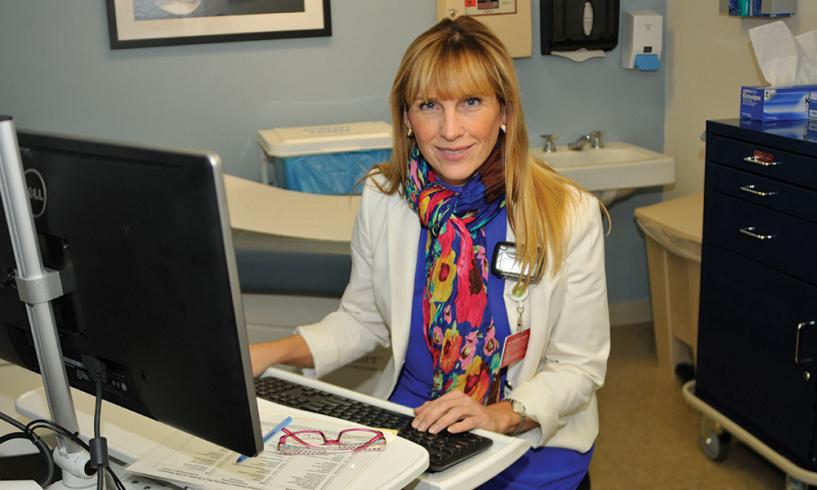As reported to Adrienne Wald EdD, MBA, RN, MCHES, CNE
Coverage by the Centers for Medicare and Medicaid Services has recently made computed tomography (CT) lung screening access possible for many at high risk for lung cancer. Part of the National Coverage Determination requires that patients engage in a shared decision making (SDM) session with their healthcare providers before entering a CT screening program. The visit is reimbursed and can be added onto a standard office visit or annual well visit.
At Lahey, SDM is conducted in the primary care office but supported by the oncology team. A multidisciplinary team, including primary care physicians (PCPs), radiology, radiation oncology, thoracic surgery, pulmonary medicine and pathology, collaborated to develop a four-page frequently asked questions (FAQ) document, written in lay language at an eighth-grade level, for patients eligible for lung cancer screening to review with their referring providers. The FAQ covers the potential harms and benefits of lung cancer screening and facilitates discussion between patients and providers.
For oncology nurses, understanding the screening and SDM visit process prepares them for their later role, should a lung cancer diagnosis be made. For example, at Lahey, once patients have conducted a SDM visit with their PCP, they call a centralized number to schedule the CT. A separate intake process verifies that patients are appropriate for screening, and they are again sent the four-page FAQ. Any questions are addressed by a program or patient navigator. If patients have a suspicious finding for lung cancer, they are referred to pulmonary medicine after direct phone communication between trained radiologists and referring physicians. Lung navigators provide oncology nursing navigational support for patients diagnosed with lung cancer.
The biggest barrier to SDM in a decentralized, primary care–based model such as ours is educating the primary care base to prepare them to serve comfortably in this capacity. Once a mechanism is set forth in a PCP office to identify patients at high risk for lung cancer (slight expansion of demographic data collected for meaningful use required), PCPs can engage in a SDM conversation with patients. When it is explained that only 3% of a typical PCP panel of patients will qualify for screening, or approximately 75 SDM discussions per year for a PCP with a typical panel of 2,500 patients, it becomes a more manageable task in a busy primary care provider office.
Access to CT lung cancer screening represents one of the greatest opportunities to improve outcomes for patients diagnosed with lung cancer in the history of the disease. SDM is a key element to providing quality care for these patients.






